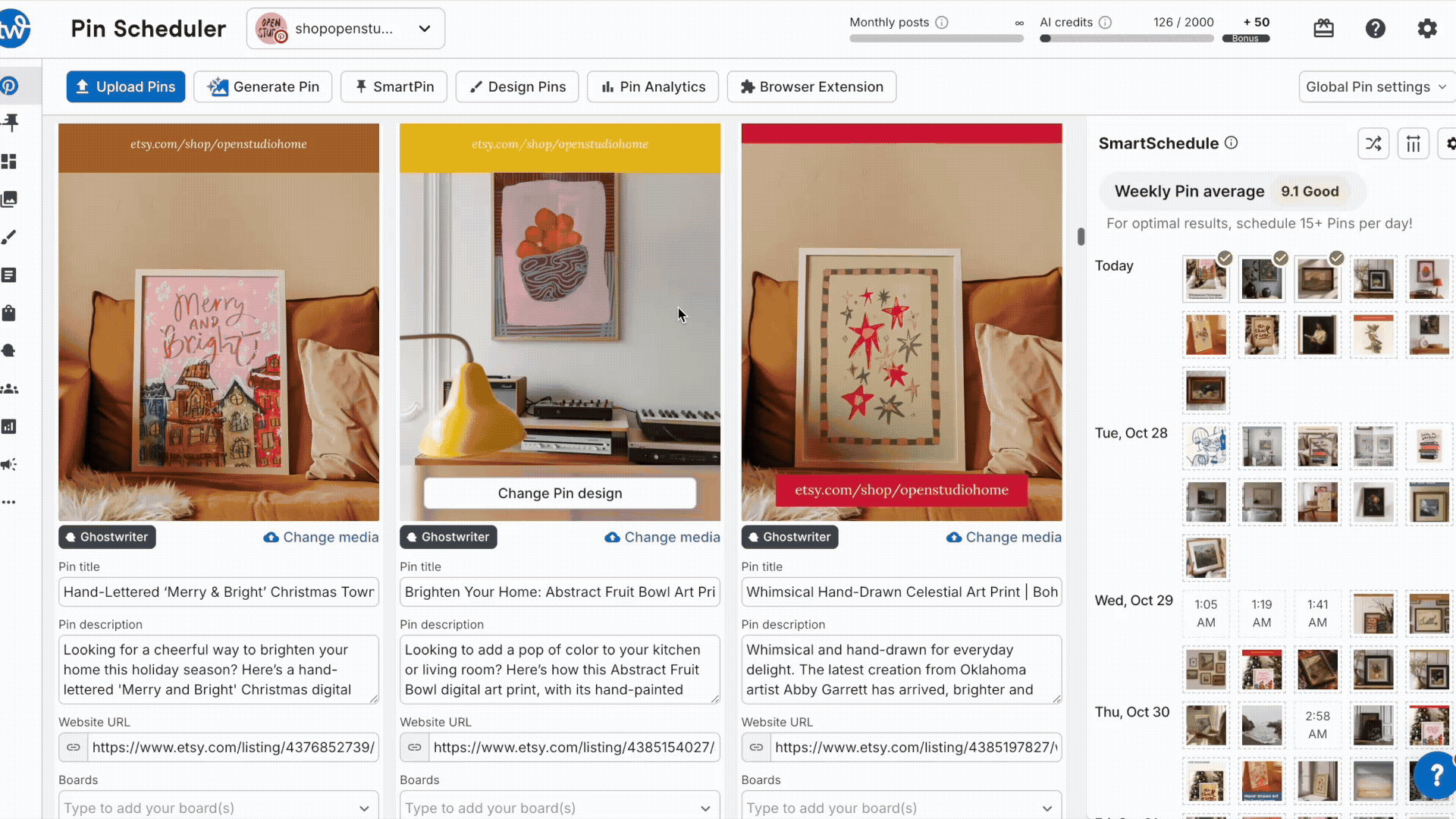SmartPin: The Power of Iteration in Product Design
UX Design & Product Strategy
How rapid iteration, user feedback, and data-driven insight shaped an AI-powered feature that helps small businesses market more consistently — with less effort.
Summary
As Lead Product Designer at Tailwind, I helped shape SmartPin — an AI-powered feature that automates Pinterest content creation for small business owners. What began as a lean MVP evolved through cycles of learning, listening, and iteration. By pairing rapid experimentation with qualitative research and behavioral data, we transformed SmartPin from an idea into a scalable product that balanced automation with authenticity — helping users grow their reach while saving time.
The Challenge
Pinterest rewards consistency. To stay visible, creators are encouraged to Pin up to 15 times a day — each with a unique image, title, and description. For small business owners, that’s a heavy creative and time burden.
SmartPin was designed to solve this. By pasting a single URL into the SmartPin generator, users receive Pinterest-optimized designs, titles, and descriptions instantly. Each week, new Pins are automatically generated — ensuring a steady flow of fresh content without added effort. The goal: help users maintain the Pin volume that drives visibility and growth, while reducing the manual lift of content creation.
At Tailwind, we’re a lean team, so our approach focuses on speed and learning. We scoped an MVP that could deliver immediate value, gather real-world feedback, and evolve quickly. Since the Pin Scheduler is where users already create and publish their content, it became the natural entry point for introducing SmartPin.
Designing the MVP
The first version of SmartPin was intentionally simple — but built for growth. I designed flexible UX flows that could scale as we learned from users.
Because AI can feel abstract or impersonal, especially to small business owners who value authenticity, clarity and tone were critical. We introduced the name “Made for You” to make the AI generation feel warm, personal, and approachable — supported by clear visuals and concise explanations.
Once a user added a URL, SmartPin analyzed their webpage to identify strong imagery and automatically generate the first set of Pinterest designs. From there, users could make light edits to copy or layout before scheduling.
Early project planning and UX explorations
MVP Release
This MVP balanced speed of delivery with a foundation for future iteration — allowing us to get something useful into users’ hands fast, while capturing data to inform what came next.
Learning from Data and Feedback
After launch, we began collecting both quantitative data and qualitative insights.
Our UX researcher synthesized user feedback that revealed a recurring theme: while users loved the automation, they often felt disconnected from the results. Many disliked the selected image or color palette and wanted more creative control. Data confirmed this — users were generating SmartPins, but many weren’t scheduling them.
That gap became our next design opportunity.
In the next iteration, we introduced editable templates and improved design options that aligned more closely with what users were organically creating on Pinterest. These updates immediately increased both the number of SmartPins scheduled per user and overall feature adoption.
This cycle — ship, listen, analyze, iterate — became the foundation for SmartPin’s continued evolution.
Iteration 2 of SmartPin: Better templates and simple editing functionality
Impact and What’s Next
By combining AI-powered generation with user-driven editing, SmartPin turned a daunting daily task into an intuitive, repeatable workflow. The feature increased scheduling activity and strengthened Tailwind’s core value proposition: helping small businesses market consistently with less effort.
Our iterative process continues to drive SmartPin’s roadmap — with upcoming features like Premium Design Options and Template Match to deliver even higher-quality, brand-aligned content.
SmartPin’s story is one of learning in motion — using data, empathy, and design leadership to transform a simple MVP into a scalable, user-loved product.








